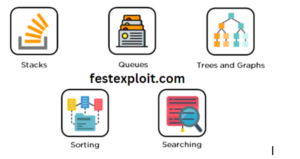What is Backend Development?

Backend development, often considered the unsung hero of web applications, plays a pivotal role in shaping user experiences. Despite its lack of visibility to the end user, it is the backbone that ensures the smooth functioning of a website or an application. It involves server-side development, databases, scripting, and the architecture of websites, which collectively handle the logic, data storage, and server configuration. As we delve into the fascinating world of backend development, we’ll explore its components, importance, and the skills required to become a proficient backend developer.
Understanding the Basics of Backend Development
Backend development refers to the server-side development of web applications or websites. It’s the part that users don’t see or interact with directly but plays an indispensable role in the functionality of a web application. The primary focus of backend development is to ensure that everything on the client side (front-end) works. It involves creating, maintaining, and testing the entire back end, i.e., servers, databases, and applications.
The Role of a Backend Developer
A backend developer is a software engineer responsible for managing the data exchange between the server and the users of a given system. Their primary task involves developing and maintaining the entire server-side logic that ensures high performance and responsiveness of the web application or website. In addition, backend developers often create data storage solutions, which could be integral to creating a user-friendly interface. Their expertise lies in creating, maintaining, testing, and troubleshooting the entire back end.
Fundamentals of Backend Development

Backend development encompasses a variety of fundamental elements that collectively contribute to the functionality of a web application. These consist of:
- Server: The server is a powerful computer where the backend code runs and processes requests. It executes app logic, responds to client requests, and communicates with databases.
- Database: Databases are organized collections of data. They store data in such a way that it can be easily accessed, managed, and updated. Backend developers interact with databases using Structured Query Language (SQL) or its variants.
- Application Programming Interface (API): APIs allow different software applications to interact with each other. They are sets of rules that will enable programs to communicate with each other. REST and GraphQL are examples of APIs commonly used when building web applications.
- Programming Languages: Backend developers use various languages like Java, Python, Ruby, PHP, .NET, and Node.js, among others. The choice of language depends on multiple factors, such as the project’s requirements, performance, and the developer’s proficiency.
Understanding these fundamentals equips a backend developer with the necessary skills to create a robust, scalable, secure back end for any web application. This understanding also provides a solid grounding for them to continually learn and adapt to the ever-evolving landscape of backend development.
Common Programming Languages in Backend Development
Backend development involves numerous programming languages, each with its unique advantages. Let’s explore some of the most commonly used:
- Java: As an object-oriented, class-based language, Java is widely used for backend development due to its performance, scalability, and robustness. It boasts a vast ecosystem of open-source libraries, frameworks, and development tools that further simplify development.
- Python: Known for its simplicity and readability, Python is an excellent choice for beginners in backend development. It’s versatile, powerful, and widely used in data analysis, machine learning, and artificial intelligence. Django and Flask are popular Python frameworks for web development.
- Ruby: Ruby, along with its framework, Ruby on Rails, is famous for its simplicity and speed of development. It follows the principle of Convention over Configuration, which reduces the number of decisions a developer has to make.
- PHP: Despite being one of the oldest languages, PHP still maintains its relevance in the modern web development landscape. It’s known for its simplicity and is the backbone of many content management systems, like WordPress.
- .NET: Developed by Microsoft,.NET is a framework that can be used with multiple languages, such as C# and VB.NET. It’s robust, versatile, and perfect for building enterprise-level applications.
- Node.js: Although JavaScript was primarily a client-side language, Node.js has enabled its use for server-side development. It’s known for its speed, scalability, and efficiency in handling simultaneous requests, making it an excellent choice for real-time applications.
The choice of a programming language largely depends on the project requirements, scalability needs, and the developer’s proficiency.
Role of Backend Development in Web Applications

The role of backend development in web applications is pivotal, as it operates behind the scenes to power the more visible aspects of the applications. Backend development is responsible for the entire server-side logic, which includes the implementation of services, data transformation, and database management. The backend supports the web application’s functionality, ensuring data is correctly stored and retrieved when necessary. This makes it integral for creating features such as user authentication, server configuration, application logic, and database interactions.
Furthermore, a robust and efficient backend contributes to the overall user experience by ensuring fast load times, data security, and application reliability. Without backend development, web applications would lack crucial functionality, making them ineffective and unreliable. In essence, backend development is the pillar upon which functional, efficient, and reliable web applications stand.
The Crucial Contribution of Backend Development to Web Applications
Backend development plays a critical role in web applications, serving as the unseen engine that drives the functionality and performance of these digital platforms. By implementing server-side logic, managing databases, and ensuring communication between the server and client side, backend developers ensure seamless user experiences.
Backend developers are responsible for creating and managing APIs, enabling interaction between different software components of a web application. This is one of the most critical aspects of backend development as APIs provide a way for the frontend and the backend to communicate and share data, thereby ensuring the seamless operation of the web application.
Security is another area where the backend plays a vital role. Backend developers implement advanced security measures to protect the web application from threats and breaches. They do this by setting up secure databases, implementing authentication and authorization protocols, encrypting sensitive data, and regularly patching and updating the backend to fix vulnerabilities.
Moreover, backend development has a significant impact on the performance of a web application. By optimizing server-side logic and database queries, backend developers can significantly improve a web application’s loading speed and responsiveness, enhancing user satisfaction.
In a nutshell, the role of backend development in web applications is indispensable. It provides the structure and functionality needed for web applications to operate smoothly, securely, and efficiently, ultimately leading to a better user experience.
Backend Development Frameworks
Backend development frameworks are crucial in simplifying and streamlining the development process. They provide a structure and set of conventions for developers to follow, which helps maintain the code’s consistency and efficiency. Here is an overview of some popular backend development frameworks:
- Express.js: A flexible and minimalist framework for Node.js, Express.js is widely used due to its simplicity and speed. It is part of the MEAN/MERN stack, making it a popular choice for JavaScript-based applications.
- Django: A high-level Python framework, Django promotes rapid development and clean, pragmatic design. Known for its “batteries-included” philosophy, Django comes with many functionalities right out of the box.
- Spring Boot: A project built on top of the Spring Framework, Spring Boot simplifies the setup and development of Spring applications. It’s a popular choice for applications that require enterprise-level robustness and scalability.
- Ruby on Rails: Popularly known as Rails, it is designed to help developers do more work with less code. This Ruby-based framework follows the MVC architecture, making it a great choice for database-backed web applications.
- Laravel: A PHP framework, Laravel emphasizes clean, elegant syntax that is pleasant to work with. It has a rich set of functionalities incorporating the basic features of PHP frameworks like CodeIgniter, Yii, and other programming paradigms.
The choice of a framework depends significantly on the project’s requirements, the developers’ language proficiency, and the development team’s preferences. Each framework has its strengths and is suited to different kinds of applications.
Challenges in Backend Development
Backend development, like any other field of software development, also poses challenges and obstacles. Some common problems faced by backend developers include:
- Scalability: Back-end developers often face the challenge of building applications that can handle increasing work. As the user base grows, the application should scale accordingly to maintain performance and user experience.
- Data Management: Handling large volumes of data and managing database operations such as retrieval, storage, and updates can be complex. Ensuring data integrity and security at all times adds to the challenge.
- Concurrency: Managing multiple users simultaneously is a common challenge in backend development. Developers must ensure that concurrent operations do not interfere with each other, causing inconsistencies.
- Security: Implementing robust security measures to protect sensitive information from potential threats is an ongoing challenge. This includes ensuring secure transactions, protecting against unauthorized access, and encryption.
- Integration: Back-end developers must incorporate various third-party services or APIs into the application. This may require handling different protocols, data formats, or authentication methods, adding complexity to the development process.
- Performance Optimization: Ensuring fast response times and efficient resource usage while maintaining high-quality performance is a constant challenge. This requires continuous monitoring, testing, and optimization.
- Keeping up with Technology: The fast-paced nature of web development means that new technologies, tools, and best practices are constantly emerging. Keeping up-to-date and deciding which technologies to adopt can be a daunting task.
Conclusion
In conclusion, backend development is critical to web development, ensuring web application stability, security, and optimal performance. It involves complex tasks like managing APIs, ensuring data integrity, and optimizing server-side logic. Backend frameworks like Express.js, Django, Spring Boot, Ruby on Rails, and Laravel offer numerous functionalities that aid in streamlined and efficient development. However, backend developers often face challenges related to scalability, data management, concurrency, security, integration, performance optimization, and staying updated with rapidly evolving technologies. Despite these challenges, backend development continues to evolve, offering innovative solutions to build robust web applications enhancing user experiences.

